This article was co-authored by Alan O. Khadavi, MD, FACAAI. Dr. Alan O. Khadavi is a Board Certified Allergist and a Pediatric Allergy Specialist based in Los Angeles, California. He holds a BS in biochemistry from the State University of New York (SUNY) at Stony Brook and an MD from the State University of New York Health Science Center at Brooklyn. Dr. Khadavi completed his pediatric residency at Schneider Children’s Hospital in New York, and then went on to complete his allergy and immunology fellowship and pediatric residency at Long Island College Hospital. He is board certified in adult and pediatric allergy/immunology. Dr. Khadavi is a Diplomate of the American Board of Allergy and Immunology, a Fellow of the American College of Allergy, Asthma & Immunology (ACAAI), and a member of the American Academy of Allergy, Asthma & Immunology (AAAAI). Dr. Khadavi's honors include Castle Connolly’s list of Top Doctors 2013-2020, and Patient Choice Awards "Most Compassionate Doctor" in 2013 & 2014.
There are 10 references cited in this article, which can be found at the bottom of the page.
This article has been viewed 25,562 times.
Cats make great pets, but if you’re allergic to cats, keeping one is a bit more complicated. Allergies in cats are caused by proteins in the cat’s sloughed-off skin cells, called dander, and its saliva.[1] By maintaining an optimal environment that reduces your exposure to cat dander and saliva, as well as taking measures to keep your allergies under control, you can keep a cat successfully even if you’re allergic to it.
Steps
Maintaining an Optimal Environment
-
1Keep your cat out of your bedroom. You likely spend at least a third of your day in your bedroom sleeping. By keeping your cat out of your room, you will greatly reduce your overall exposure to cat allergens. Keep the door to your bedroom shut when you are gone, and ensure that your cat’s toys and food are located elsewhere in the house.[2]
-
2Consider a HEPA filter. HEPA filters are high-powered air-particle filters that can remove microscopic pet dander from the air. Place HEPA filters in the rooms you spend the most time in at home, such as your bedroom or home office, to reduce your exposure to allergens. Most HEPA filters are rated to clean a certain number of cubic feet (or meters). Aim to buy a HEPA filter the filtering capacity of which matches the size of your room.[3]Advertisement
-
3Change out the filters in your HVAC system. If you have central heat and air, you can use your HVAC system to filter the air throughout your house. Purchase air filters that have a high minimum efficiency reporting value (MERV) rating. These filters will capture pet dander as well as other allergens such as pollen, molds, and dust mites.[4]
-
4Clean the house regularly. Cat hair, which is covered in allergenic saliva, and cat dander are shed in your house constantly. To keep your allergies under control, clean your house at least once a week to reduce the number of allergens in the environment. If possible, it is preferable to hire someone without allergies to clean your house, as sweeping and vacuuming can dust allergens up into the air and aggravate allergy symptoms.[7]
- If you allow your cat in your bed, wash your sheets in hot water twice a week.[8]
- Certain vacuums, such as the Eureka Sanitaire True HEPA and the Sunpentown V8506 with HEPA, have HEPA filters, which can remove even more allergenic particles from the air. It may be worth investing in one if your allergies are severe.
-
5Switch out carpets and drapes for allergy-friendly home furnishings. Cat dander is microscopic and can be difficult to draw out of rugs, drapes and upholstered surfaces even with regular cleaning. Wood, stone, and metal furnishings are all easier to clean fully than fabric surfaces. By swapping rugs for hardwoods or tile, and choosing non-upholstered chairs, you can reduce the amount of pet dander in your home.[9]
Keeping Your Allergies Under Control
-
1Wash your hands after touching your cat. Your cat licks itself clean, which means its hair is covered in allergenic saliva. After touching your cat, be sure to wash your hands with soap and warm water, scrubbing for at least 30 seconds. This is especially important before you touch your face, which is particularly sensitive to allergens.[10]
-
2Use a dander-reducing solution on your cat weekly. Certain dander-reducing solutions and shampoos, such as Allerpet and Nature’s Miracle Allergen Blocker, cleanse your cat and can remove some allergy-causing dander. Wet a small washcloth with the cleaner and wipe your cat’s face and body, going with the direction of the fur rather than against it. While there is no definitive proof that these truly reduce the allergens coming from your pet, it may be worth trying if your allergies are more mild.[11]
-
3Take OTC allergy medication regularly. Taking an allergy medication, such as Benadryl or Claritin, can reduce allergy symptoms. One to two pills of Benadryl can be taken every 4-6 hours, and one pill of Claritin can be taken once daily. These medications block your body’s histamine reaction, which is what makes your eyes water and skin itchy in response to cat dander.[12]
- If your allergies are severe, it may make sense to have a consultation with an allergist to see if prescription allergy medication is right for you.
-
4Consider allergy shots. If you have your heart set on having a cat despite your allergies, allergy shots can actually reduce how allergic you are to cats. These shots are made from a serum of cat allergens and injected into the upper arm at incrementally increasing doses over a number of weeks until you reach a maintenance dose, which you can receive monthly. The shots increase your tolerance for cat allergens, effectively reducing your symptoms. You will need to be tested for your allergy by an allergist, who will mix an injection serum specifically for you.[13]
- It often takes up to 6 months of regular injections for allergy shots to take effect. They also work better for some people than for others.
- Make an appointment with an allergist to discuss your options and if allergy shots are right for you.
References
- ↑ https://www.lung.org/clean-air/at-home/indoor-air-pollutants/pet-dander
- ↑ https://www.petfinder.com/cats/living-with-your-cat/cat-allergies/
- ↑ Alan O. Khadavi, MD, FACAAI. Board Certified Allergist. Expert Interview. 29 July 2020.
- ↑ Alan O. Khadavi, MD, FACAAI. Board Certified Allergist. Expert Interview. 29 July 2020.
- ↑ https://acaai.org/allergies/management-treatment/living-with-allergies/air-filters/
- ↑ https://www.nachi.org/change-hvac-filter.htm
- ↑ Alan O. Khadavi, MD, FACAAI. Board Certified Allergist. Expert Interview. 29 July 2020.
- ↑ https://www.aafa.org/control-indoor-allergens/
- ↑ https://www.sleepfoundation.org/allergies-and-sleep/allergens-that-impact-sleep
- ↑ https://vet.osu.edu/sites/vet.osu.edu/files/legacy/documents/pdf/education/mph-vph/allergic%20to%20your%20cat.pdf
- ↑ https://www.jacionline.org/article/S0091-6749(99)70227-7/pdf
- ↑ Alan O. Khadavi, MD, FACAAI. Board Certified Allergist. Expert Interview. 29 July 2020.
- ↑ https://kidshealth.org/en/parents/shots.html
About This Article
If you own a cat and are allergic, take an over the counter antihistamine daily to reduce your symptoms. Be sure to follow the directions on the box, as Benadryl should only be taken every 4-6 hours and Claritin can only be taken once daily. To lessen your exposure to cat dander, vacuum your house at least once a week. Don’t forget to wash your sheets with hot water twice a week if you let your cat on the bed. For homes with central air, change out the filters in your HVAC system every 3 months, since these will be covered in pet dander, as well as other allergens like pollen, mold, and dust mites. When your cat licks itself, its allergenic saliva gets all over its hair, so be sure to wash your hands with soap and warm water after touching your cat. This is especially important to do before you touch your face, which is really sensitive to allergens. For more tips from our Veterinary co-author, like how to combat your allergies with medicine, read on!
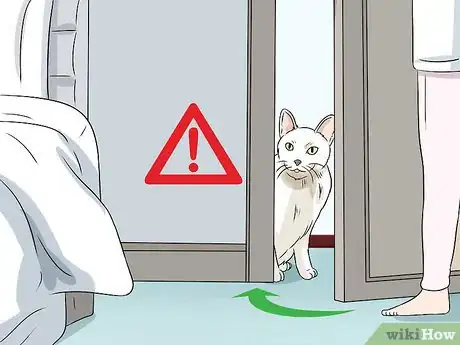


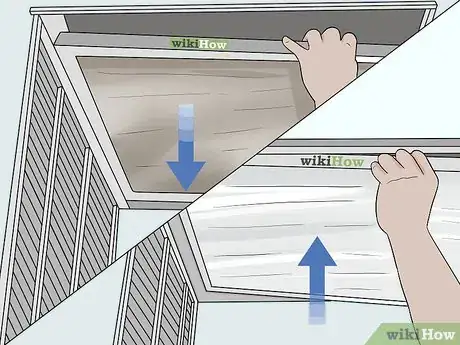
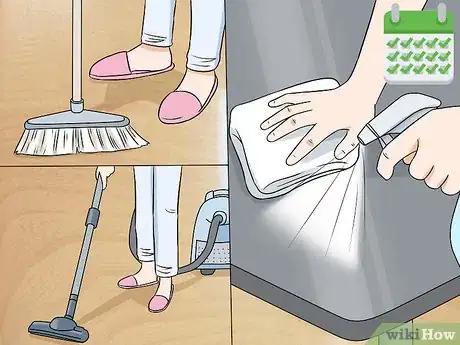



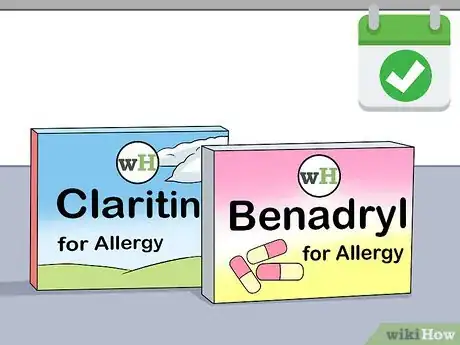
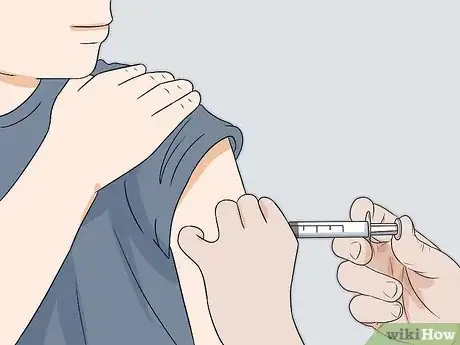



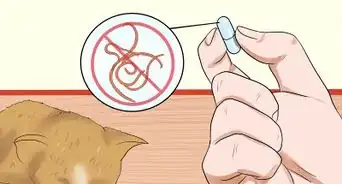

-Step-11-Version-6.webp)













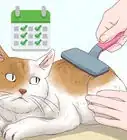

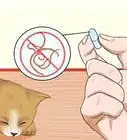



































Medical Disclaimer
The content of this article is not intended to be a substitute for professional medical advice, examination, diagnosis, or treatment. You should always contact your doctor or other qualified healthcare professional before starting, changing, or stopping any kind of health treatment.
Read More...